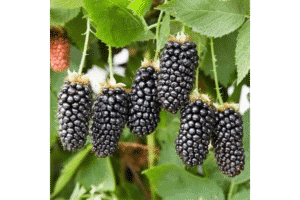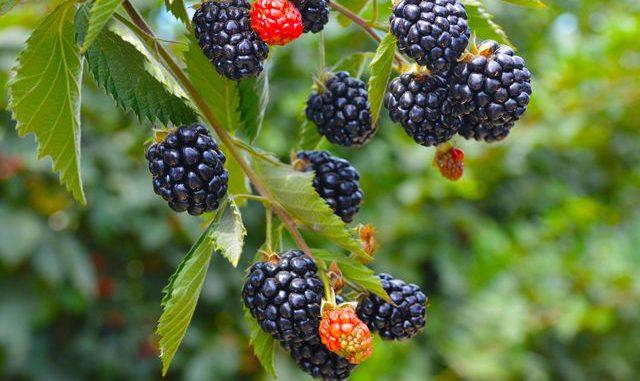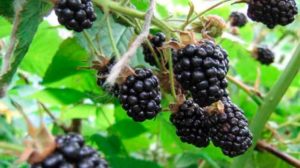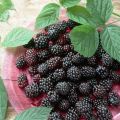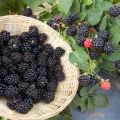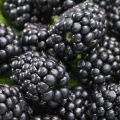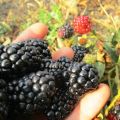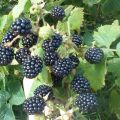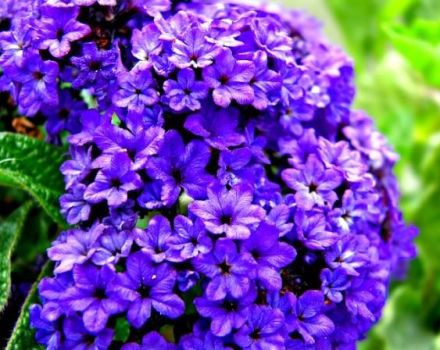Description and characteristics of Lochness blackberries, planting and care
The Lochness blackberry is renowned for its abundant productivity, high immunity to diseases and harmful beetles. Berries are full of useful vitamins and minerals. The bushes are grown for sale or personal use. To get a lot of harvest, plant a crop correctly, you should familiarize yourself with the information below.
Description and features
Loch Ness blackberry is in demand in Europe, USA, it is an industrial variety. It was bred in 1990 in England by the breeder D. Jennings. Loch Ness is a complex hybrid, the parent crops were European raspberries, blackberries and Logan berries.
The large-fruited variety has received an award from the Royal Society of Gardeners of Britain for its large fruit size and high yield.
Bushes
Blackberry bushes are compact, grow up to 4 meters in height. The variety is semi-creeping, the lashes grow straight at first, then they become thinner, lean towards the soil. Shoots develop rapidly, forming a mass of lateral branches. The rhizome is powerful, the leaves are serrated, medium in size, rich emerald tone.
Berries
The fruits of the Loch Ness blackberry are large, black in color with gloss, and resemble an ellipse in shape. The first fruiting brings the largest blackberries, up to 10 g in weight. After that, the average weight of the berries is 4-5 grams. They are collected in tassels. The tasters rated the taste of the variety at 2.7 points. Unripe berries are sour, while ripe berries are sweet, with a sour taste, and aromatic. She has small bones, they are juicy, they can withstand transportation well. The fruits can be picked mechanically.
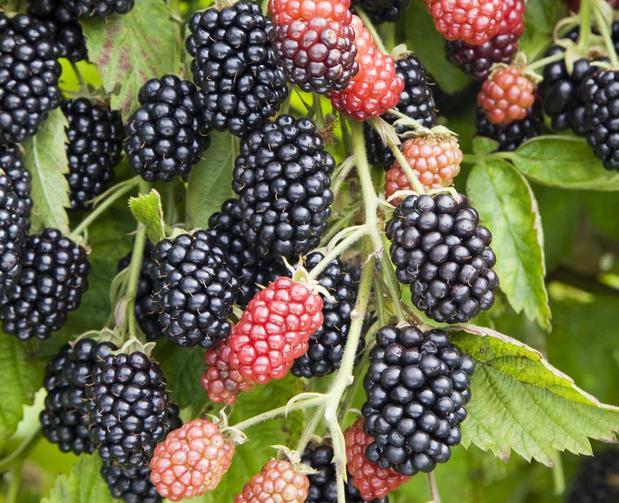
Yield indicators, fruiting dates
The Loch Ness variety of blackberries is one of the most productive, even in the absence of proper care, 15 kg of berries are harvested from 1 bush. With proper supervision, it is possible to get 20-25 kg. The first fruits are formed a year after planting the bush, but active fruiting is noted in the 3rd season. The berries are harvested from mid-August to September 15 in several approaches.
Scope of berries
Blackberries are used for fresh consumption, decorating desserts, adding to baking. You can make compotes, jam, smoothies from it. More often berries are used for freezing, processing, since fresh, they are sour.
Resistance to pathologies, harmful insects
Loch Ness blackberry bushes have strong immunity, are rarely exposed to diseases and insect invasions. In the absence of proper care, the protective properties are reduced.
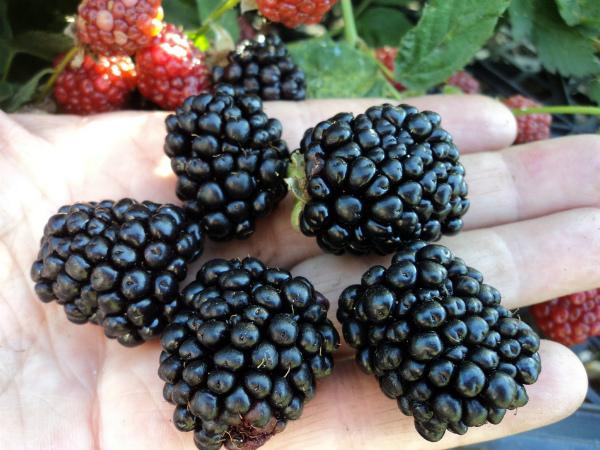
Positive and negative sides of the variety
Loch Ness blackberries offer many advantages, but also many disadvantages.
| pros | Minuses |
| High yield | Sour berry taste |
| Large, beautiful berries | Mid-late ripening period |
| Bushes form many shoots | Bushes require shelter for the winter |
| Scourge grows fast | When planted in the shade, rainy summer, berries gain little sugar |
| The berries are dense, have good keeping quality | Fruits contain less vitamin C compared to other types of blackberries |
| Mechanical harvesting of fruits is possible | |
| Shoots without thorns | |
| Scourges do not need to be cut | |
| High resistance to bad weather, diseases, harmful beetles | |
| Undemanding to soil composition | |
| Breeds easily |
How to grow properly
There are no special agrotechnical rules for planting Loch Ness blackberries. The bushes are planted according to the standard scheme, choosing the right place, time, preparing the ground in advance, processing the seedlings.
Dates and place of landing
Loch Ness Blackberries should be planted in the spring when there is no risk of frost return. In the South, you can resort to autumn planting, around September.
In the spring, in warm regions, it is not worth planting a culture, since the heat quickly sets in there, destroying the blackberries that did not have time to take root.
The landing site should be well lit by the sun, protected from wind gusts.Any soil is suitable, but it is advisable to plant the bushes on fertile, loamy, well-drained soil.

Preparation of the planting pit, soil
Wells for planting blackberries are dug with a diameter of 50 cm, the same depth, the top layer of earth is laid to the side. It is then used to create a potting mix. The soil is mixed with a bucket of humus, 50 g of potassium, 150 g of phosphorus. You can add dolomite flour, or crushed eggshells, which are a source of calcium. If the soil is dense, sand is added to it, and an additional dosage of organic matter is added to the calcareous soil. The soil should be slightly acidic, 5.7-6.5 PH. The hole is 2/3 filled with the prepared combination, filled with water. They wait 1 week after the performed manipulations.
Preparation of planting material
Blackberry seedlings are examined for damage, traces of pests, and the presence of dry roots. They are soaked in a solution that stimulates the growth of the root system like Epin for 2 hours, you can still dip them in a manganese solution. Seedlings are cut 25 cm before planting.

Berry planting process
Loch Ness blackberry bushes should be planted according to the following scheme:
- distance between bushes in rows - 1.5-2 meters;
- the distance between the beds is from 3 meters.
In the prepared holes, seedlings with a straightened rhizome are placed, covered with earth. The root collar should be 2-4 cm above the surface. Pour with a bucket of water, mulch the circle with straw, peat or humus. Due to the mulch, the growth of weeds is inhibited, the bushes are protected from drought, the soil structure is preserved. You can cover the aisles with agronomic fiber. The material makes it possible to save time for mulching, it is relevant if blackberries are grown for the purpose of selling on industrial plantations.

The subtleties of caring for a shrub
Caring for a blackberry is easy. She needs regular watering, mulching, fertilization, pruning. The bushes are examined every week for diseases, beetle attacks.
Watering
Blackberries love moisture, in the absence of precipitation, the bushes are irrigated once a week, you can 2. Pour the settled liquid, it should not be cold. Water is introduced under the rhizome.
Pruning
The Loch Ness blackberry grows well, it is often not worth pruning, this provokes even greater thickening, a decrease in yield. The main formation of the bushes is carried out in spring and autumn, the damaged, weak specimens affected by harmful beetles and diseases are removed. In May, the branches are shortened by 15 cm, the lateral shoots are trimmed.
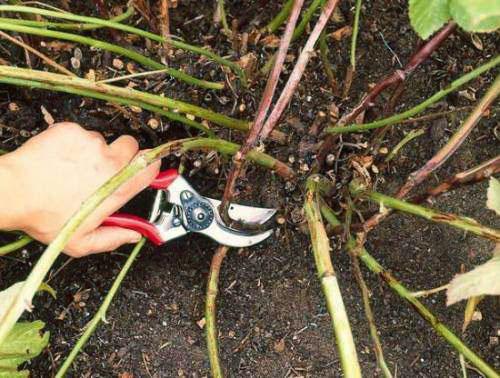
They are tied as a fan to the trellises, dividing last year's increments and new copies. In autumn, old shoots that have completed fruiting are excised. The bushes are thinned, there should be up to 4-6 stems after manipulation. They do not leave hemp, as they act as a source of infections, become a refuge for pests.
Top dressing
Blackberries are fertilized starting from the 3rd year of life to build up green mass. The first feeding is resorted to in July, potash and phosphorus compounds are introduced. They improve the taste, structure of the fruit, help the bushes to prepare for wintering. The hedgehog is fertilized with calcium, boron, iron. Mineral substances will not be superfluous. From organic matter, wood ash is excellent for culture.
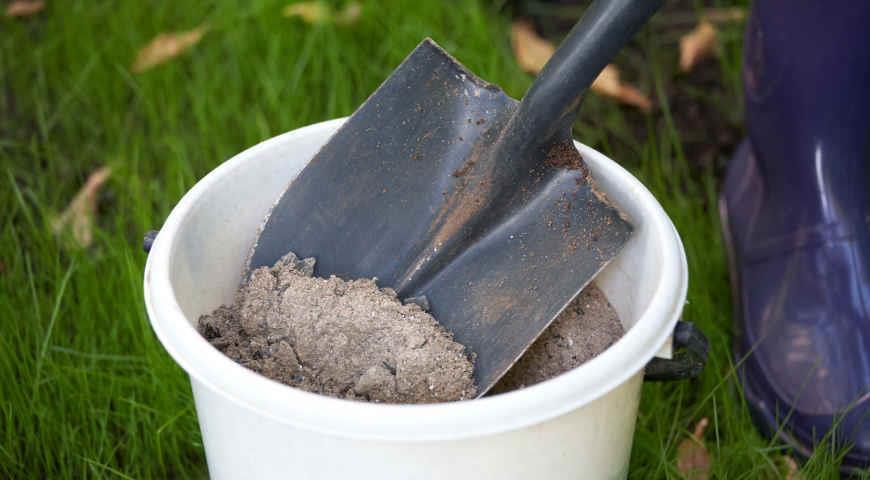
Wintering
Loch Ness blackberries have high winter hardiness, but it is advisable to cover them for the winter for abundant fruiting in the coming season. Especially the bushes need shelter in regions where the air temperature drops from -20 or more in winter. The plant is laid on the ground with a trellis, peat, spruce branches, sawdust are placed on it, and a plastic wrap is placed on top. When the snow falls, this will provide additional cover for the bushes.
Pathologies, pests and control of them
The plant needs preventive treatments. During preparation for winter, the bushes are sprayed with Bordeaux liquid 1%, or copper sulfate. The procedure is repeated in March, before the buds open. Blackberries can be irrigated with sulfur-containing agents, they prevent the development of fungal infections, and have a negative effect on different types of mites.
Breeding features
Blackberries are propagated by rooting the tops, layering. In the case of deliberate injury of the rhizome with a scapular bayonet, the bush gives a lot of growth. The method of sowing seeds is not in demand, as the plant can grow differently from the parent. Seedlings are relevant only for the development of new hybrids.
Experienced gardeners recommend propagation by root petioles. In private households, you should not resort to this technique. It is easier to practice propagation by layering, or by adding new growths.
